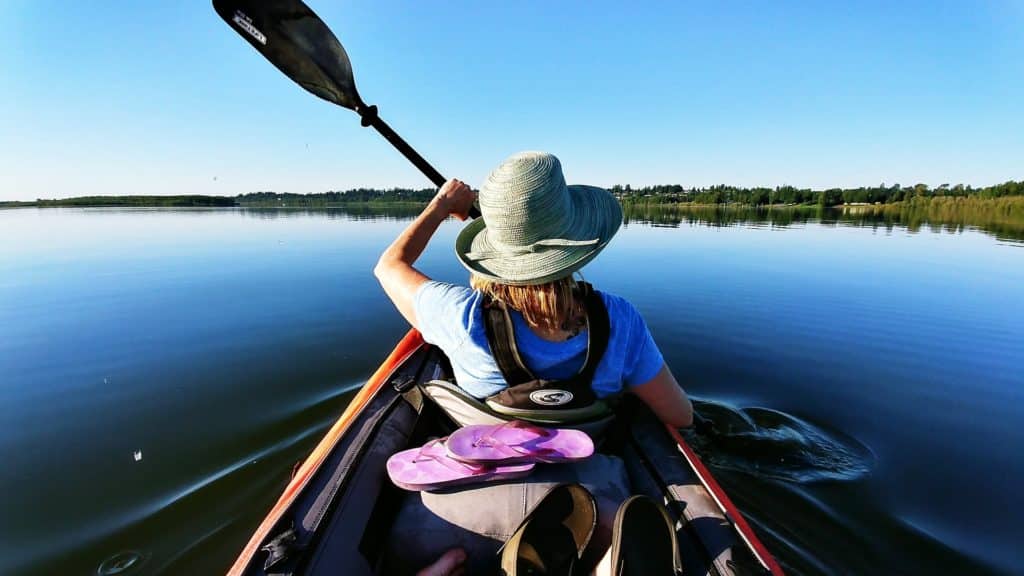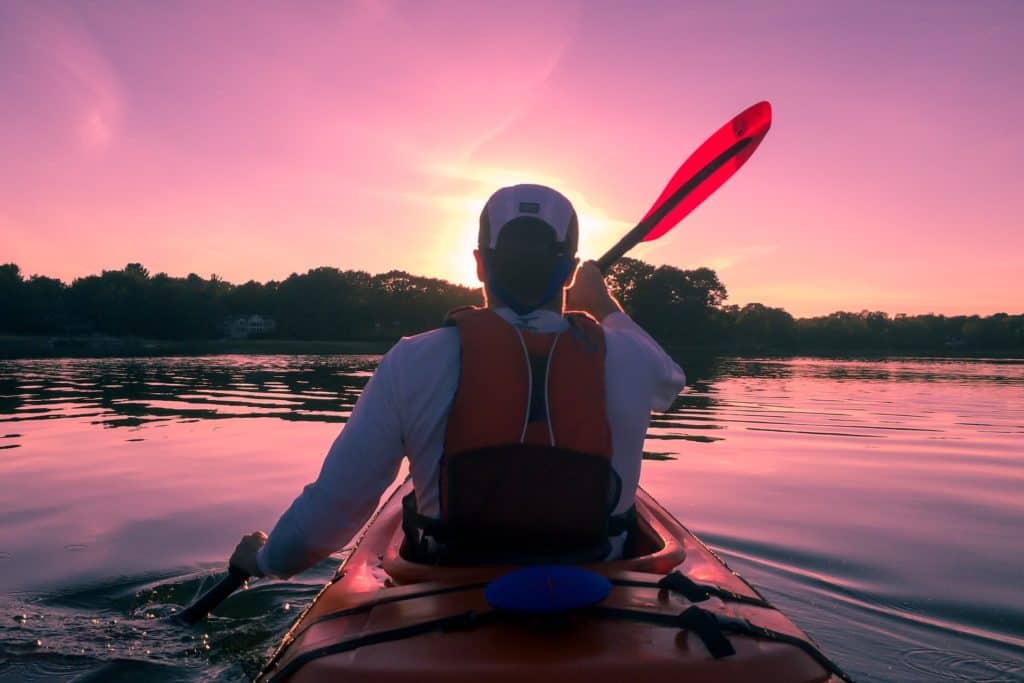The Most Common Kayak FAQs
Kayaking is a great way to hit the water, see some sights from a different point of view and get some exercise while having fun. If you are new to kayaking, you should take things into consideration before going out to purchase one. Knowing what to look for along with the basics of how to use one will make kayaking more enjoyable. Here are the most frequently asked questions when it comes to getting out onto the water for the first time.

What bodies of water should I use with a kayak?
You can kayak in many different types of bodies of water! Lakes, rivers, canals and even the sea can all be great for a kayak. However, leave the whitewater stuff until you’re more advanced on the kayak. Instead, stick to calm lakes and canals when just learning. You can then move onto tranquil rivers before trying swifter ones and the sea.
The type of kayak you have will also make a difference. If you have a kayak that is mainly for lakes, then don’t try to use that for the sea.
How do I find the right kayak for me?
There are many different kayaks to choose from! Which one you go for will be down to personal preference, but you should always start with kayaks specifically for beginners. Sit-on kayaks are great choices as they are more stable and easy to control when you are just learning. Because you sit on it, it is not enclosed and is easy to get in and out of. They come in sizes for one to three people. If you want a kayak to go fishing in, then some have features specifically for that with places for fishing equipment.
Another type of kayak is a touring kayak, which you sit inside of. They’re great for a trip across the lake or river. They can be for single or tandem and often have a lot of storage space so you can bring a picnic along. Other kayaks include sea and whitewater kayaks. These are designed to be fast in rougher waters. The whitewater kayak is shorter so it can manoeuvre through rapids. They are recommended for experienced paddlers only and should not be attempted if you do not have kayaking experience. Start with a sit-on kayak to get the feel of the boat and paddling before moving on to something more advanced. Never think you can just “grow” into a kayak as it can be very dangerous.
What clothing should I wear?
You need to stay warm and dry, but dress for the water, not the weather. If you capsize, then heavy warm clothing will not be helpful. Wear light waterproof jackets and pants. Some kayakers will even go for a wetsuit. Kayaking gloves will also keep hands comfortable whilst paddling.
What type of safety equipment do I need?
There are a few things you should always keep with you to stay safe in the kayak. First of all, have a buoyancy aid on at all times to help in the event of capsizing. Also, as most kayaks have plenty of storage space, make sure you keep drinking water with you. A snack is a good idea too.
Other equipment you will need is a sound-producing device. Many go for a whistle as it is cheap but effective. This will help people find you in the event of an emergency. A safety mirror is also a great visual piece of equipment to have. If you are paddling in the daytime (which you should stick to), then this mirror can help reflect light and help people see you from a considerable distance.
You should also have a rope or tow line of some sort, a first aid kit, and a “throwbag”. A throwbag is a bag that comes in numerous sizes that are attached to a rope. It is thrown into the water to another kayaker to grab and be pulled in. This is mainly for other kayakers safety, but can also be used for yourself if needed.
What are some basic techniques in using a kayak?
First of all, you need to be sitting properly in your kayak. This will make manoeuvring and paddling much easier. Your kayak should have foot pegs where you can rest your feet. Have your toes point outwards and heels pulled in towards the centre of the boat. Knees should be slightly bent upwards and resting on thigh braces.
Holding the paddle the right way will also make a difference. Hold the paddle with both hands and keep the arms shoulder-width apart. Knuckles should be kept in line with the blade. The concave part of the paddle should sweep through the water.
How do I stay safe in the water?
You should wear a buoyancy aid whilst kayaking for safety. They are similar to life jackets but allow more movement so you can get back into your kayak. Even if you are a strong swimmer, a buoyancy aid is an absolute must.
In the event of capsizing, try to stay with your boat, but if it is difficult or others are in trouble, don’t worry about the boat. They can be replaced, but lives cannot. This is also why it is a good idea never to kayak alone.
Fun facts about kayaking
- Kayaks were originally used for hunting by the Inuit, Aleut and Yup’Ik. The word “kayak” itself means “hunting boat”.
- Kayaking has been an Olympic sport since 1936. Hungary has the most medals in kayaking so far!
- In 1928, 29-year old Franz Romer, a WWI veteran, crossed the Atlantic Ocean in a kayak. He left Lisbon, Portugal, and travelled 4,000 miles to Puerto Rico despite not knowing how to swim. It took him 58 days.
- The world record for most kayaks to “raft up” together is 1902. This happened in New York in 2011.

Getting a kayak can be great fun. Transporting it without the right equipment is not. That is why Yakima offer kayak roof racks and other car accessories to make it easy to get from your home to the water with no trouble. No matter what size car you have, Yakima have your roof racks for kayaks. Your kayaks will fit perfectly on the roof rack, keeping in place to safely get them to the water in a streamlined way. If you are interested in kayaking or other sports where obtrusive equipment is used but worried about transportation, then have a look at what Yakima has to offer or speak to one of our experts to find the right transport solution for you.
Last updated: 5th December 2017